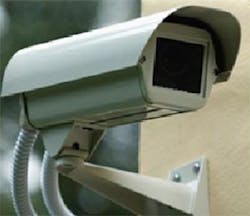White paper addresses field of view issues
Security cameras are an important tool in the protection of facilities and critical assets. One aspect of deploying a security camera is setting its field of view (FOV).
Oftentimes, the setting of the field of view of a camera is taken for granted, with the idea that it will be adjusted during the final phases of installation. However, the proper set up of security cameras is directly related to the level of effectiveness they will provide and their field of view needs to be considered early on in the process.
Now, Pure Tech Systems (Phoenix, AZ, USA) has written a white paper that highlights some mistakes commonly experienced in the field when setting up the field of view of such security cameras. The white paper can be used as a guide to avoid these types of issues in future deployments.
Entitled "Mistakes to Avoid When Setting a Camera Field of View," the white paper can be downloaded from the company's web site here after a brief registration process that takes no longer than a minute.
Related articles from Vision Systems Design that you might also find of interest.
1. Imager improves security screening
Scientists at Manchester University (Manchester, UK) have developed a hyperspectral x-ray camera based on an 80 x 80 pixel cadmium zinc telluride imager that could improve security screening at airports.
2. Security software automates image analysis tasks
A system being developed by Christopher Amato, a postdoc at MIT's Computer Science and Artificial Intelligence Laboratory (CSAIL) and colleagues Komal Kapoor, Nisheeth Srivastava and Paul Schrater at the University of Minnesota, can perform image analysis more accurately and in a fraction of the time it would take a human operator.
3. Biometric identification system leverages Fourier analysis
Researchers at the Universiti Sains Malaysia have developed a biometric identification system that can identify and validate the veins within the finger of a human being.
Vision Systems Design magazine and e-newsletter subscriptions are free to qualified professionals. To subscribe, please complete the form here.
-- Dave Wilson, Senior Editor, Vision Systems Design
